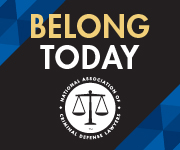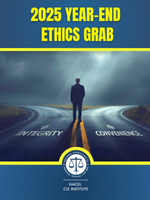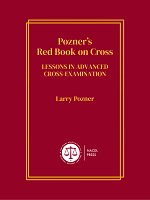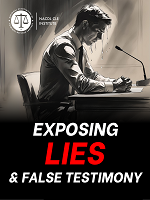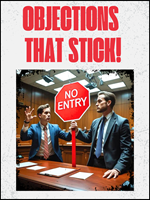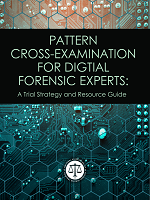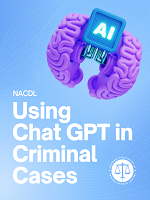As FBI Concedes that Thousands of Convictions May Have Relied on Flawed Analysis, Team with Expertise in Post-Conviction Appeals and Forensic Science will Ensure that Cases are Handled Properly
Washington, DC (November 19, 2007) – The Innocence Network and the National Association of Criminal Defense Lawyers announced today that they are forming a Joint Comparative Bullet Lead Analysis Task Force to ensure that convictions resulting from discredited FBI bullet analysis are properly reviewed.
An investigative report by CBS News’ “60 Minutes” and the Washington Post revealed that thousands of convictions nationwide may have been secured based on false FBI testimony about the ability to “match” bullets used in one crime to a small number of other bullets manufactured at the same time. As a result of the investigative report, the FBI admitted that its agents may have provided misleading testimony in thousands of cases. The FBI agreed to take concrete steps, in consultation with independent experts, to identify potential wrongful convictions resulting from bullet lead analysis and to prevent misleading testimony in future cases.
“The FBI’s plan to deal with this serious and deeply troubling problem is good but long overdue,” said Barry Scheck, Co-Director of the Innocence Project, which is affiliated with Cardozo School of Law. “This should have happened in 2004, when the scientific community made it clear that bullet lead analysis is not reliable. A serious review of old cases is critical because innocent people – such as Lee Wayne Hunt in North Carolina – may well have been convicted based on discredited, unreliable FBI analysis.”
The Joint CBLA Task Force formed by the Innocence Network and the NACDL will assist the FBI in reviewing closed cases and serve as a resource for defense counsel and for defendants who may have been wrongfully convicted based on erroneous or misleading FBI testimony. While the Task Force will work with the FBI, the Innocence Network and NACDL said the FBI should notify defendants and defense attorneys (beyond only notifying prosecutors) in individual cases where CBLA testimony contributed to convictions. The Task Force will vet and respond to cases as the FBI releases them and will ensure that attorneys handling the cases have access to legal and forensic expertise to weigh the impact of false or misleading CBLA testimony. The Joint CBLA Task Force will also monitor the FBI’s compliance with its own newly announced commitments to review old cases and prevent misleading testimony in future cases.
“The FBI is to be commended for their intention to right many old wrongs. The Task Force will be comprised of legal and scientific experts who will review trial transcripts, scientific reports and related materials in cases in order to independently weigh the likely impact of the discredited testimony on the jury’s verdict,” said NACDL President Carmen Hernandez. “Our team of experts will work with staff from the Department of Justice to help make sure no case is neglected.”
The CBLA Task Force will also assist defense and post-conviction counsel in assessing the impact of the discredited testimony on the trial and verdict.
“Our organizations bring a particular expertise in deconstructing post-conviction cases to determine whether unreliable forensic evidence merits vacating convictions or seeking other remedies. We know that FBI bullet lead analysis played a role in thousands of convictions nationwide, and once the FBI releases full details of these cases, we will have a sense of how many cases should be reopened,” said Theresa Newman, Co-President of the Innocence Network, an association of nearly 40 organizations that handle post-conviction innocence cases.
More About Comparative Bullet Lead Analysis
According to William Tobin, a metallurgist and former FBI supervisory special agent, Comparative [sometimes called compositional] Bullet Lead Analysis (CBLA) has gone without significant challenge for over 40 years. CBLA is a nuclear technology that measures the composition of bullet lead by quantifying the percentages of other metals associated with lead bullets, chiefly antimony, arsenic and copper.
It has been used thousands of times in criminal investigations, and offered as “scientific evidence” in many hundreds, probably thousands of cases over the past few decades. As long ago as 1964, one such technique, neutron activation analysis, was used to link swabs from the body of Lee Harvey Oswald to a revolver and a rifle seized in connection with the assassination of President John F. Kennedy and a Dallas police officer. Traces of antimony and barium were found in both weapons and on Oswald’s hand and cheek.
However, a February 2004 report by the National Research Council of the National Academies cast grave doubt on the extrapolation of trace metal analyses for the purpose of stating, under oath, the likelihood that a fragment of a bullet found at a crime scene “matched” other bullets found in the possession of a criminal defendant. Comparative Bullet Lead Analysis is now completely discredited as probative evidence of guilt in American courtrooms. The FBI ceased offering such testimony in court in 2005 and now says it intends to right past wrongs by re-examining thousands of cases in which now-discredited scientific expert testimony was wrongfully offered and wrongfully admitted in criminal trials.
More About the Case of Lee Wayne Hunt in North Carolina
One of the thousands of people nationwide who were convicted (at least in part) based on comparative lead bullet analysis is Lee Wayne Hunt, who has served almost 23 years in prison in North Carolina for crimes he has always maintained he did not commit. Despite presenting compelling new evidence of innocence to the courts of North Carolina, he may spend the rest of his life in prison.
In 1986, Hunt was convicted and sentenced to two life sentences for killing Roland and Lisa Matthews in Fayetteville, North Carolina. The primary evidence linking Hunt to the murders was the purchased “snitch” testimony of a man who claimed that he drove Hunt and another man to the Matthews home and then drove them (and a third man) away after they committed the murders. There was no physical evidence showing that Hunt ever had been inside the Matthews’ home – no hairs, no blood, no fibers. The prosecution, however, was able to present supposedly “scientific” evidence that seemed to show that the snitch was indeed telling the truth. FBI Agent Kenneth Peele testified that bullets taken from the victims’ bodies “most likely” came from a box of bullets tied to the defendants. This testimony, not refuted at the time, was devastating corroboration of the snitch testimony. Not surprisingly, the jury rejected Hunt’s alibi evidence as well as testimony by Hunt and several of his friends that one of the other men, Jerry Cashwell, had admitted committing the murders alone. Cashwell was convicted in a separate trial.
Since Hunt’s trial, new evidence has established that the prosecution’s case against Hunt was built upon lies and misleading evidence. First, the prosecutors have acknowledged that the snitch lied about West being inside the house and taking part in the murders. Then, almost 20 years later, Staples Hughes, one of Cashwell’s lawyers, came forward and revealed that early on in the proceedings in this case, Cashwell had admitted to his lawyers that he had committed the murders alone. Cashwell provided his lawyers with details about how he had committed the crimes, and throughout the course of his trial and appeals, and up until his suicide in prison in 2003, Cashwell never retreated from his claim of sole responsibility. During Cashwell’s life, Hughes felt that he had to keep silent to protect the attorney-client privilege. In 2004, after Cashwell’s death and after the North Carolina Supreme Court, in another case, allowed police and prosecutors to obtain statements made by a deceased client to his lawyer, Hughes made the decision to come forward to try to end the incarceration of an innocent man. Meanwhile, the “scientific” evidence relied on by the state to buttress the snitch’s testimony has also turned out to be a hoax. It is now widely accepted that bullet lead analysis presented by FBI Agent Peele at Hunt’s trial is not scientifically supportable. At a hearing on January 8, 2007, in Cumberland County Superior Court, the prosecution in Hunt’s case stipulated to the unreliability of Peele’s “expert” testimony.
Earlier this year, Hunt’s new lawyers unsuccessfully attempted to present all of this evidence of innocence to North Carolina Superior Court Judge Jack Thompson. When Hughes got on the stand to offer his testimony of Hunt’s innocence, Judge Thompson’s reaction was first to warn Hughes that he would report Hughes to the North Carolina State Bar for violating Cashwell’s attorney-client privilege. Hunt also had subpoenaed West to the hearing, but when the prosecution stated that they might charge West with perjury if he testified about Hunt’s innocence, West also refused to testify. Judge Thompson later issued an order dismissing the FBI’s discredited lead bullet analysis evidence as irrelevant, and held that he could not even consider Hughes’ testimony about Cashwell’s admissions. The North Carolina Court of Appeals refused to even review Judge Thompson’s order. In the next few days, Hunt’s attorneys will ask the North Carolina Supreme Court to intervene in the case.
Contacts
NACDL Communications Department
The National Association of Criminal Defense Lawyers is the preeminent organization advancing the mission of the criminal defense bar to ensure justice and due process for persons accused of crime or wrongdoing. A professional bar association founded in 1958, NACDL's many thousands of direct members in 28 countries – and 90 state, provincial and local affiliate organizations totaling up to 40,000 attorneys – include private criminal defense lawyers, public defenders, military defense counsel, law professors and judges committed to preserving fairness and promoting a rational and humane criminal legal system.

